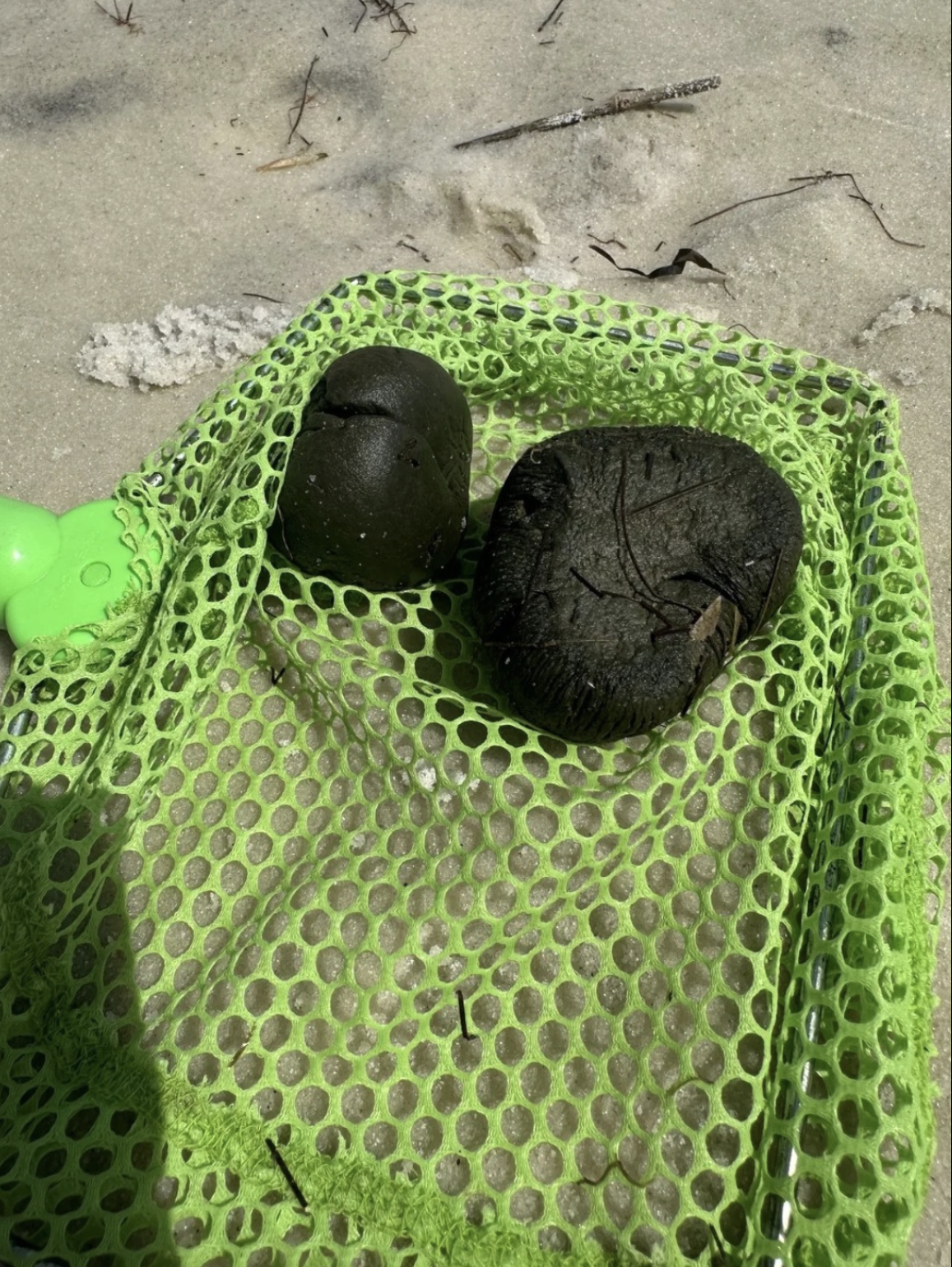What Are These Mysterious Beach Balls?
Those smooth, round, dark lumps your kids love to collect are called mudballs — and they’re 100% natural.
Found along the shores of Pensacola Bay, Perdido Bay, and other calm, muddy coastlines, these balls form through a quiet, slow-motion process of tide, sediment, and time.
They’re not man-made.
They’re not animal droppings.
They’re not pollution.
They’re geological souvenirs — shaped by the sea.
🌊 How Mud Becomes a Ball – Nature’s Rolling Machine
Here’s how it happens:
Soft mud banks sit beneath the surface of shallow bays — rich in organic material, dark, and clay-like.
Over time, chunks of this mud break off due to:
Wave action
Tidal currents
Feet walking through shallow water
Once free, the lump gets tumbled by the waves — rolling, spinning, and smoothing — just like sea glass or river rocks.
Sand and water act like sandpaper, rounding the edges into a perfect little sphere.
The result?
A smooth, compact, pliable ball of sediment — light enough to float, firm enough to hold.
It’s nature’s version of a stress ball — made by the tides, polished by the sea.
🎨 What Do Mudballs Look Like?
Color
Dark green, gray, or nearly black (due to organic-rich sediment)
Texture
Smooth, slightly squishy, like wet clay
Size
From marble-sized to as big as a tennis ball
Smell
Usually none — if it stinks, it’s likely something else (like tar or decay)
Weight
Light when dry, heavier when wet
They’re often found near marsh grasses, tidal flats, or sandy banks — places where mud meets movement.
❓ Are They Safe? Are They Polluted?
In most cases — yes, they’re safe.
These mudballs are just sediment — no chemicals, no toxins, no biohazards.
However:
If it smells like oil or sulfur, don’t touch it — could be tar or contaminated material
If it leaves a greasy residue, wash hands immediately
If it feels unnaturally rubbery or sticky, it’s likely not a true mudball
But 99% of the time?
It’s just mud shaped by the sea — completely harmless.
And yes — kids can touch them (just wash hands afterward).
🧒 Why Kids Love Mudballs (And Why You Should Too)
Let’s be honest — kids are drawn to the weird, the slimy, the mysterious.
And mudballs are:
Fun to hold — squishy, smooth, cool
Great for pretend play — potions, treasure, alien eggs
A gateway to curiosity — “How did it get here?” “Why is it round?”
They spark questions about:
Tides
Erosion
Sediment
The hidden life of the seafloor
And that’s priceless.
For generations, Gulf Coast kids have collected these little orbs — tossing them, painting them, even trading them like sea glass.
They’re not museum-worthy.
But they are memory-makers.
🏖️ Final Thoughts: Sometimes the Best Beach Treasures Aren’t Shells — They’re Mud
We come to the beach looking for:
Shells
Sand dollars
Sea glass
Maybe a crab or two
But the real magic?
It’s in the unexpected.
That weird ball your kid won’t stop talking about?
It’s not gross.
It’s not dangerous.
It’s not poop.
It’s a tiny masterpiece of nature — rolled by waves, shaped by time, and handed to your child like a gift from the sea.
So next time they run up, mudball in hand, yelling “SEA TURD!”…
Don’t correct them.
Smile.
Kneel down.
Say:
“Look at that beautiful Pensacola mudball.
Let’s find another.”
Because sometimes, the difference between a gross lump and a childhood treasure…
Isn’t in the object.
It’s in the story.
And once you know its secret?
You’ll never see the beach the same way again.
